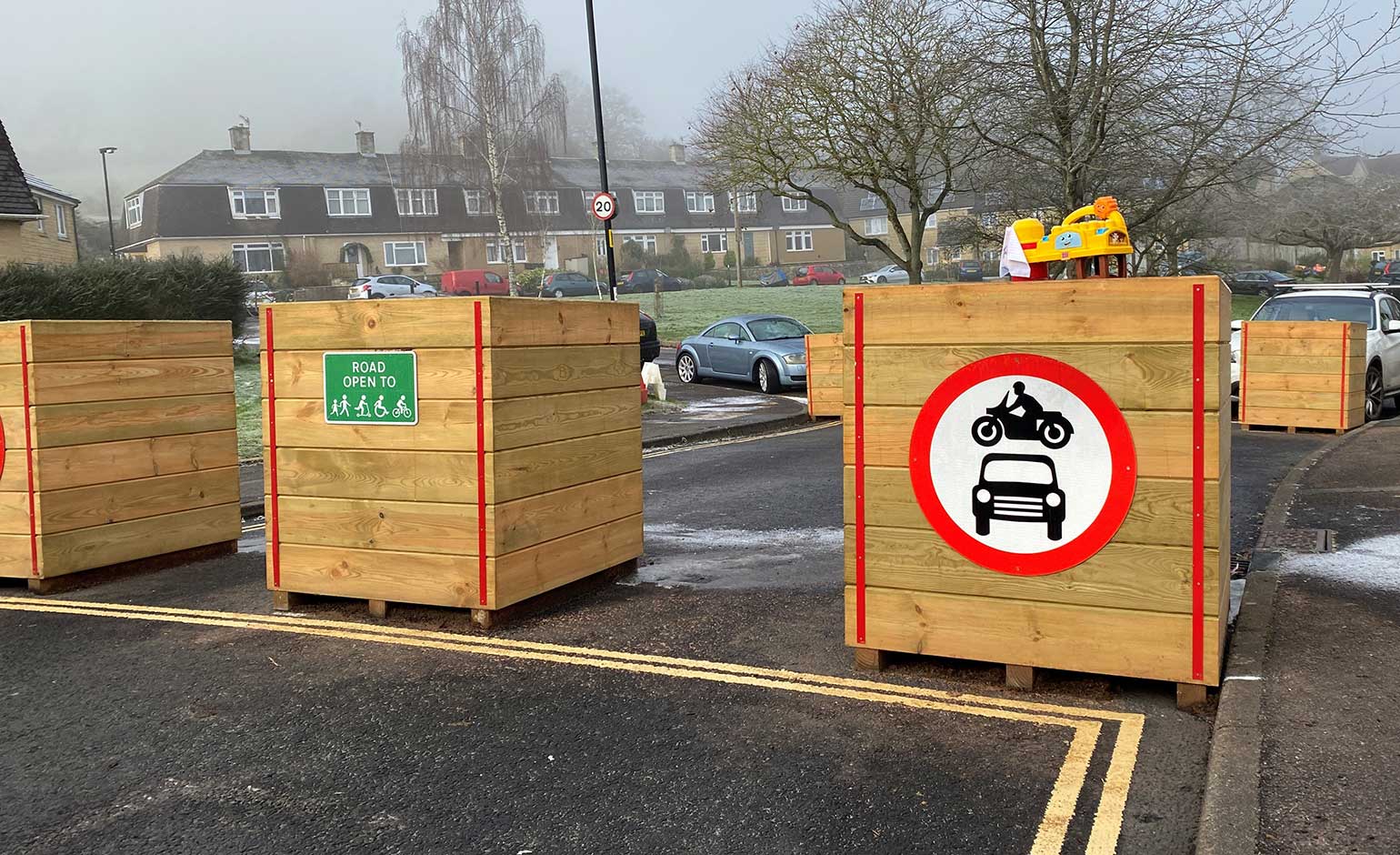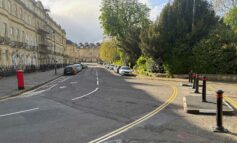Controversial proposals to make experimental traffic restrictions in three communities permanent have been announced by Bath & North East Somerset Council.

The planters on Southlands | Photo © John Wimperis
The through-traffic restrictions on Southlands in Weston village, Queen Charlton Lane in Whitchurch and Church Street in Widcombe were put in place in November 2022 as part of the local authority’s Liveable Neighbourhoods programme.
A decision on their future has now been taken by Councillor Manda Rigby, the Cabinet Member for Transport.
The trials, which were consulted on with communities, have proven contentious for those on affected streets such as Southlands.
The council consultation found that 57% of people in Southlands who responded to the survey opposed the scheme, while 40% supported it and 3% said they did not know.
Councillor Rigby’s decision is now subject to a five-day call-in period, in which nine or more councillors must submit their objection.
If the decision isn’t called in, the council has said it will start a Traffic Regulation Order process from 5th February to legally put the traffic management schemes in.
If this happens, the Traffic Regulation Order could be in place in the early spring.
During the trials, the council gathered feedback from residents and monitored the impacts of traffic on surrounding roads and air quality so that the decision on whether to keep or remove the trials could be based on the evidence collected.
In each location, the purpose of the through-traffic restriction was to prevent motorists from using inappropriate residential roads as short cuts, while maintaining vehicle access to homes, and to provide a “safe and pleasant” route for walking and cycling.
Residents raised concerns about the council’s findings, saying the roads hadn’t been used as rat runs, and held a protest last weekend.

Locals calling for the planters on Southlands to be removed last weekend | Photo courtesy of Marie John
Councillor Manda Rigby, Cabinet Member for Transport, said: “I want to thank everyone who has taken part in consultations and given their feedback.
“Before starting the trials reports showed nearly half of all traffic in Southlands and Church Street was through traffic, defined as vehicles using the road without stopping.
“After the trial in all cases, the number of vehicles entering the streets for access from either end of the restrictions also dropped significantly, in addition to through traffic being cut to zero.
“The monitoring reports showed that no significant traffic impacts were recorded on the primary alternative routes as a direct result of the trials and, most commonly, there were air quality improvements within and outside the trial area.
“In all cases, the NO2 readings are well below the government legal limit and also within the council’s own stricter targets.
“Having taken the decision to make the schemes permanent and subject to the call-in period the Traffic Regulation Order could be in place by the spring.”
The council is now considering proposals for five more traffic restrictions under the Liveable Neighbourhoods programme in the Lower Lansdown and Circus area, in the Lyme Road and Charmouth Road area, and in the New Sydney Place and Sydney Road area, all designed to prevent residential areas being used as short cuts and increase choice and safety for those that choose to walk, scoot or cycle.
A long list of proposed interventions suggested by communities is being reviewed by local councillors and considered as part of a business case to be submitted to the West of England Combined Authority in early summer 2024.



